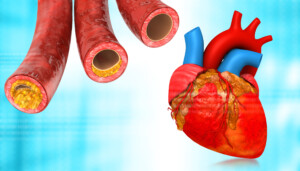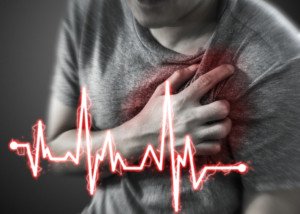
Emory University School of Medicine cardiologists note that X-ray via CT scan can measure the size of the fat layer surrounding the heart.
The fat layer around the heart is called epicardial adipose tissue.
Knowing the size of this harmful layer can be used as a gatekeeper, say the Emory researchers.
The imaging result of this threatening layer of tissue can help a cardiologist determine if a nuclear stress test should be the next step for the patient.
A nuclear stress test measures how well the heart uptakes oxygen via blood flow during rest, and also during stress (the stress may be in the form of exercise or chemically induced).
Obesity Endangers Health, no Matter How Body Positive You Are
According to the study, people with a higher volume of fat around the heart tend to have the most dangerous form of coronary plaque buildup: non-calcified plaque.
Calcium, a mineral, tends to accumulate in coronary artery plaques. However, the mere presence of calcium in an individual plaque simply doesn’t always mean impending trouble.
Plaques that are not calcified are indicative of active plaque buildup.

Plaque buildup. Shutterstock/Explode
The adipose tissue surrounding the heart, compared to the fat just beneath the skin, secretes more inflammatory hormones.
When the fat around the heart secretes these inflammatory hormones, this may promote an active plaque buildup process in the coronary arteries.
This is demonstrated by the presence of the non-calcified atherosclerotic plaques.
These conclusions came from examining 214 patients via cardiac CT.
The patients also received calcium scoring, assessment of fat around the heart, and coronary plaque evaluation.
In patients with non-calcified plaques, the volume of fat around the heart was the highest (about 60 percent greater than patients with calcified plaques).

Mechanical Dangers of Excess Fat Around the Heart
“Obesity in itself is a risk factor for heart disease,” says Danielle DonDiego, DO, a family physician and obesity specialist with SteadyMD, an online program where patients can call, text or video chat with their doctor anytime.
The term “heart disease” doesn’t just refer to clogged coronary arteries, but this umbrella term can also refer to chronic heart failure.
“Heart failure is actually caused by a weakening of the heart muscle to pump or fill with blood,” says Dr. DonDiego.
“Excess fat around the heart does make it more difficult to pump, just like wearing a backpack while hiking vs. not wearing one — it’s harder with extra weight on the heart muscle.”
Risk Factors for Heart Disease that You Probably Never Thought Could Be
- chronic sleep of six or less hours per night
- chronic sleep of more than nine hours per night
- overall total sleep per 24 hours exceeding nine hours
- sleep apnea
- insulin resistance or prediabetes
- chronic anxiety
- excess abdominal fat, even if your legs and arms are thin and your weight is “normal” for your height.

Intuitively, you should know that the more fat around your heart, the more likely you will have coronary artery disease.
The fatty tissue around one’s ticker can be trimmed, and future fat can be prevented, with cardiovascular exercise.
The heart is a muscle, and in order for this muscle to be fit and healthy, it must be exercised.
Losing a hundred pounds is not easy, but not impossible. Check out the tips for clean eating below.

 Dr. DonDiego
Dr. DonDiego







































